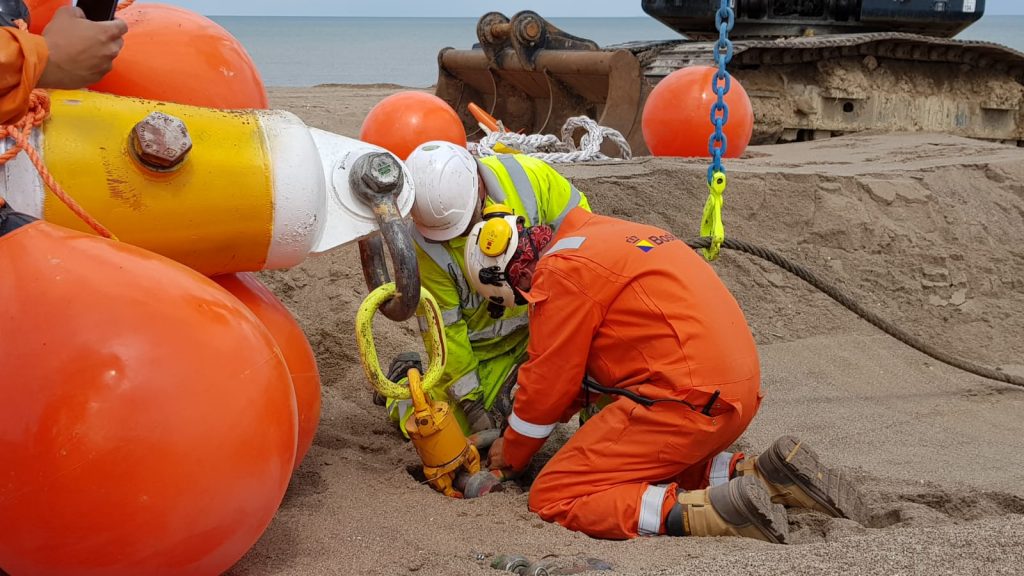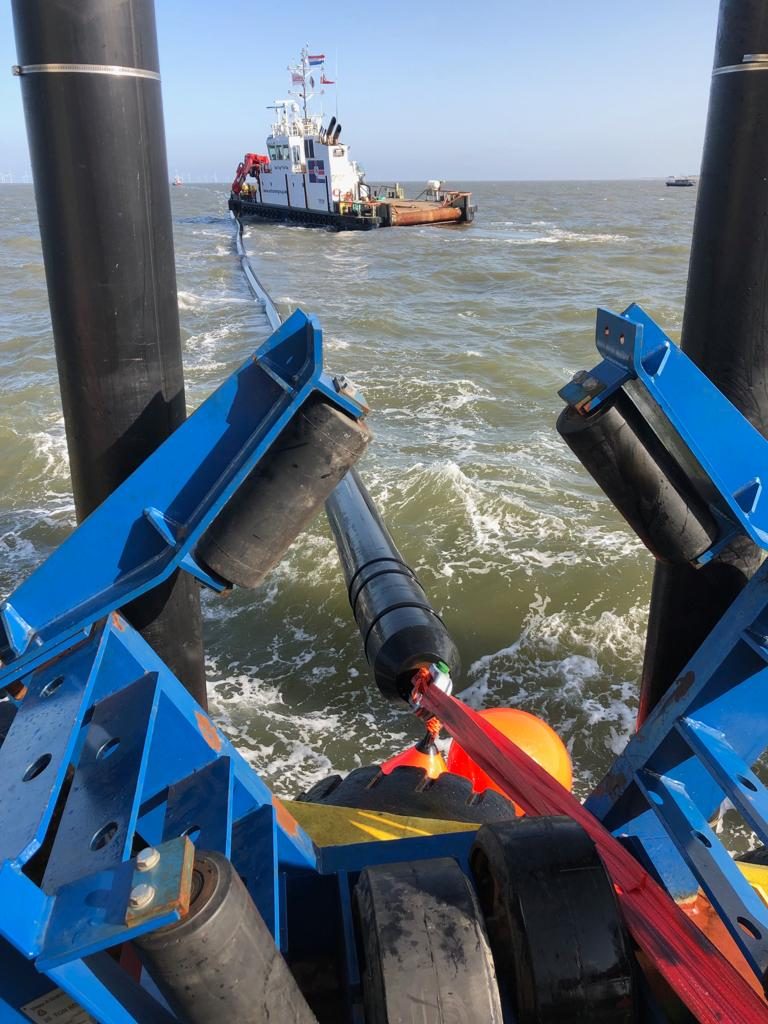Overview
The key engineering process critical to the “trenchless installation” of these ducts was Horizontal Directional Drilling. The ducts are made of 450mm high-density polyethylene pipe, welded together to form a continuous length.
Offshore, both cable ducts emerge in two excavated exit pits, to ensure both pipe and cables are below the seabed when construction is completed. The ducts remain sealed to prevent seawater and debris from entering the pipes, until the two 220kV HV export cables are installed in 2020.
All nearshore HDDs and the supporting onshore construction activity takes place from Temporary Construction Compound 1*.
Principle Contractors:
- VBNK consortium (Boskalis with cable manufacturer NKT) - Nearshore HDD installation.
- J Murphy & Sons Ltd (JMS) - Onshore Cable route and civils.
Expected completion: Q2 2021 (completion of landfall works and reinstatement.)
* Temporary Construction Compounds are key hubs located alongside main construction works and used for the likes of materials storage, facilities and equipment.
Progress updates
Reinstatement of the 57km onshore cable route and landfall has also now reached completion and, in most areas, you can’t see any evidence construction works took place!
The Triton Knoll onshore cable route was a record breaking project. Firstly, the route is the longest electrical cable route of any offshore wind farm in Europe. Secondly, the works involved the completion of Horizontal Directional Drills (HDDs) at 146 separate locations, resulting in 774 individual drills, and this is the most ever undertaken on a UK infrastructure project.
In total, we avoided more than 300 obstacles (roads, rivers, railway tracks etc.) as a result of using the HDD technique which dramatically reduced the impact of construction works on the local community.
Ongoing landscaping and hedgerow maintenance at locations along the onshore cable route will be managed by Dobson UK as part of the wider Landscaping and Maintenance contract.
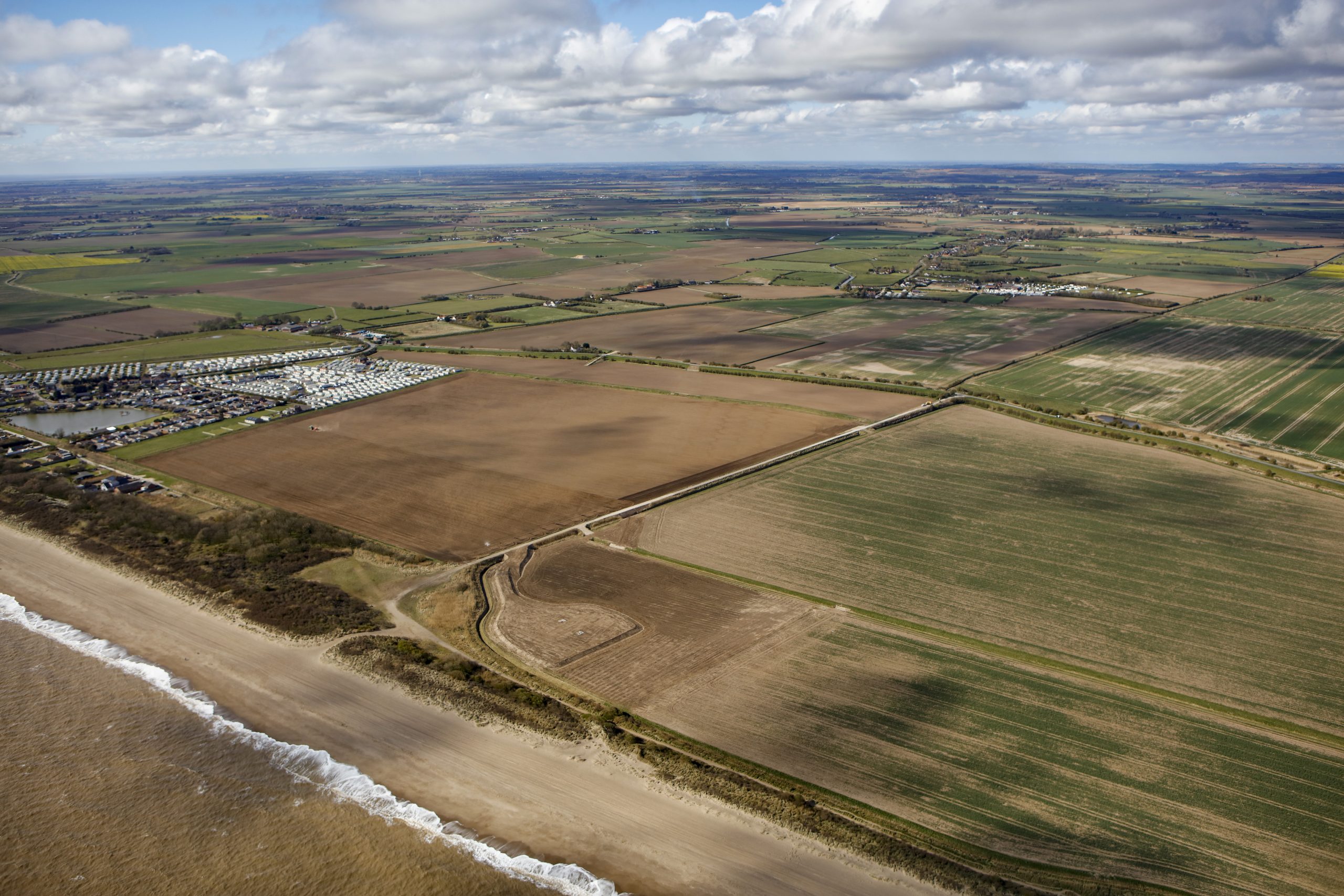

Following on from the successful installation of our two 50km long export cables, works have been ongoing to complete reinstatement of the construction compound located at the Landfall.
Reinstatement works around the Transition Joint Bay (TJB) commenced last year but have been delayed due to weather conditions. Once works have completed at the TJB, the reinstatement of the wider construction compound will be completed.
Hedgerow reinstatement has now been completed. Any hedgerows removed as part of our construction works were replaced. Following replanting, there has been a 10% net gain to biodiversity across the onshore cable scheme.
Post construction drainage works are due to take place in locations around the Landfall from February 2021 and reinstatement works are due to recommence at the Landfall from March 2021. We expect to have completed reinstatement by the end of May 2021 but, as always, activities are weather dependant.
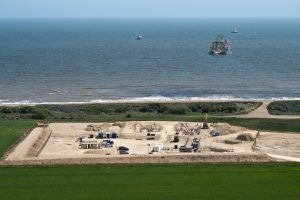
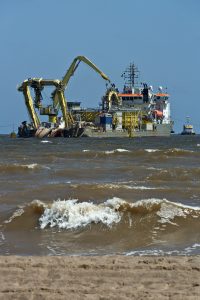
During 19/20 August, Triton Knoll has taken another huge step towards first power generation in early 2021, completing the installation of its two 50 kilometre-long export cables, linking both the onshore and offshore electrical systems.
The successful delivery was achieved during one of the project’s most challenging times due to the impact of Covid19, and has been completed within the planned summer delivery window.
Throughout construction, the safety and welfare of everyone working on the project has been and remains a top priority for Triton Knoll and its contractors. Covid19 forced the implementation of significant changes in working practices, requiring regular screening and testing of personnel, long periods of isolation for many of those working on the project, and site and vessel lockdowns to ensure the safe and timely delivery of the critical energy infrastructure project could continue.
Project Director for Triton Knoll and RWE Renewables, Julian Garnsey, said “We are delighted to have completed this phase of construction within the summer delivery window despite the impacts of Covid19. This is a great credit to all of our supply chain partners and everyone working in the Triton Knoll team. We have made excellent progress on the project to date, and look forward to installation of the first offshore turbines in early 2021.”
Both 50km export cables were completed with the jointing of the final length of NKT-manufactured subsea offshore export cable, undertaken by NKT from the vessel Olympic Zeus.
Boskalis, part of the VBNK partnership with NKT, laid and plough buried both lengths of 220kV subsea cables, which link the two offshore substation platforms to the onshore electrical network, using the vessel NDurance. Each circuit, once energised, will transmit the high voltage electricity generated by the wind farm back to the shore, and ultimately into UK homes and businesses.

Earlier this month, the project successfully installed the first 25km length of subsea offshore export cable from its landfall connection at Anderby Creek, establishing a first point of contact between the onshore and offshore infrastructures.
Find out more about the installation of our export cables, from the video below:
Contractor Boskalis, in a consortium with NKT, is continuing with cable installation throughout the summer in order to complete the full offshore circuit of two lengths of 3-core export cable, linking the two offshore substation platforms to the onshore electrical network. Once complete, each circuit will be capable of transmitting the high voltage electricity generated by the wind farm’s 90 turbines back to the shore 50km away, and ultimately into UK homes and businesses.
The offshore export cables are just one part of the wider offshore electrical system, and connect into two Offshore Substation Platforms, which have both now been installed over 50kms off the coast of Lincolnshire. Inter array cabling, which links the turbines to the offshore substation, will follow during the summer, ahead of turbine installation in early 2021.
The site was handed back to our onshore cable contractor, J Murphy & Sons (Murphy), in September 2019 and work has been continuing around the construction compound ever since.
All of the Horizontal Directional Drilling and duct installation is now complete around the construction compound.
Murphy continue with works on site at the compound in preparation for the construction of the Transition Joint Bay (TJB) (where the offshore cables and onshore cables will join).
During October, stone taken from other locations along the onshore cable route which have already been reinstated, was delivered to site using the dedicated access road. The stone is due to be used at the location of the TJB, as the ground requires raising to enable Murphy to construct the bay.
The actual footprint of the compound is being reduced, as the remaining works require less storage and plant than the offshore drilling works which are already complete.
We expect the TJB construction works to complete by the end of November 2019. Smaller ‘enabling works’ will then continue periodically until the site is handed back to our offshore cable contractor, Boskalis, in Q2 2020 in order to complete the offshore cable installation works. We expect these works to take place over Q2 and Q3 2020.
Once installed, the cables will require testing and then restoration works will commence. We expect the site to be fully restored by the end of November 2020.
The preparation phase at the cable landfall site ended in July 2019, with the two 900m long Horizontal Directional drills and duct installations complete, ensuring the site is now ready to receive the offshore export cable when it is installed in Q2 2020.
Demobilisation of the HDD equipment and personnel from the onshore temporary site continued until the end of July and was cleared by the beginning of this month (August 2019.)
This latest milestone comes with a “thank you” message from the project to the neighbouring communities, for their support and patience during the 24hrs drilling works.
In advance of the works, we held an open day for local residents to explain the works and keep the community up to speed with our works. Responding to requests from the parish council and members of the public, our contactor Boskalis took significant steps to ensure the works would have minimal impacts on the use of the beach, and has used new, high-tech sound suppressing techniques and protection to reduce noise impacts.
The site is due to be handed back to J Murphy & Sons who will continue with the onshore cable works in September 2019.
The key works to connect Triton Knoll’s onshore and offshore electrical circuits start this Spring at the project’s landfall location north of Anderby Creek.
To date, JMS has been preparing the onshore Haul Road which runs between Temporary Construction Compound* (TCC) 1 and 2, and includes the building of a bridge across Anderby Main Drain, to allow construction traffic to access TCC 1.
The nearshore Horizontal Directional Drilling and supporting onshore construction activity will take place from TCC 1. The drills will establish two 900 metre-long tunnels beneath the sand dunes and beach, avoiding the sea defences. These tunnels will emerge offshore in two purpose-built exit pits; specialist vessels will then feed the high-density polyethylene pipe ducting through from offshore to onshore, ready to receive the 220kV export cable circuits later in 2020.
In anticipation of potential low-level noise associated with the works, both directly from the drilling and from the supporting infrastructure, our contractors worked hard to minimise this, including installing soundproofing and using low noise equipment where they were able.
All works are coordinated with the Environment Agency to avoid impacting on the annual beach replenishment programme in the Spring.
Throughout the works, visitors to the beach will see a number of vessels close to shore, including a BackHoe Dredger and a Pipe Feed-in Barge, as well as numerous smaller vessels linked to the works.

